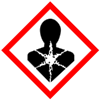 |
King of Chemicals Manufacturers |
Specifications, Properties, Uses, SDS of Diethanolamine or 2,2'-Iminodiethanol or DEA USP NF IP Analytical Reagent Grade Manufacturer Supplier Exporter Wholesale & Small Packs, CAS Number 111-42-2. |
|
| King of Chemicals has several associated companies having accreditations like cGMP, GLP - FDA Approved Good Manufacturing Practice and Good Laboratory Practice of WHO standard, ISO-9001, ISO-14001, ISO/IEC 17025, ISO ISO-45000, HACCP, FSSC 220000, FSSAI, "REACH" Registered, Kosher & Halal Certified. e-CTD and DMF support can be made available if needed. We offer USP NF BP Ph Eur EP IP JP Analytical Reagent FCC Food Grade Chemicals & Nutraceuticals. | |
        |
|
Muby Chem Pvt. Ltd. is a several decades old group of companies, engaged in manufacturing, supplying, distributing, wholesale supplies of Diethanolamine USP NF IP Analytical Reagent Grade for actual users, including retail or small pack supplies for research and development work.
We supply fine and speciality chemicals, pharmaceutical excipients, mineral fortifiers in chemically pure, analytical reagent grade, IP BP USP Ph Eur EP JP and other pharmaceutical grade monograph including FCC Food grade chemicals and Nutraceuticals at best prices. We and/or our associated units have all the facilities to supply as per cGMP standard observing good manufacturing practice and good laboratory practice. We can assure low microbial count and also offer a test certificate for the same. We maintain warehouses across USA, India, and UAE. Our group exports to USA, Canada, Mexico, Argentina, Brazil, Chile, Korea, Malaysia, Thailand, Indonesia, Europe, and several other parts of the world. We supply in wholesale container loads to small pack of few grams. Solid products may be specified for it size and shape as desired by the buyer.


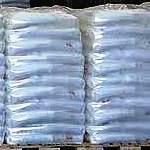
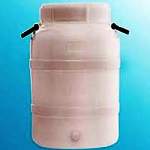
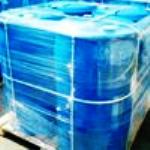
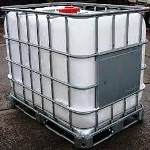
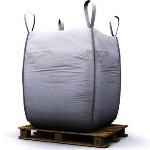
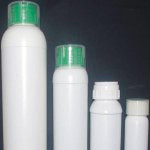

Diethanolamine or 2,2'-Iminodiethanol or DEA CAS Number 111-42-2
For Properties Specifications Uses of Diethanolamine or 2,2'-Iminodiethanol or DEA Click Properties, Specifications, Uses, Price, Process of Diethanolamine Manufacturer.
For For SDS MSDS Sheet of Diethanolamine or 2,2'-Iminodiethanol or DEA Click SDS Safety Data Sheet MSDS Sheet of Diethanolamine Manufacturer.
The Properties, Specifications, Monograph and Uses of Diethanolamine or 2,2'-Iminodiethanol or DEA:
Diethanolamine or DEA or DEOA is an organic compound with the formula HN(CH2CH2OH)2. Pure diethanolamine is a white solid at room temperature, but its tendencies to absorb water and to supercoo mean it is often encountered as a colorless, viscous liquid. DEA is used as a surfactant and a corrosion inhibitor.
Diethanolamine USP NF Grade Specifications:
C4H11NO2 --- 105.14
Ethanol, 2,2′-iminobis-.
2,2′-Iminodiethanol --- CAS 111-42-2
Diethanolamine is a mixture of ethanolamines, consisting largely of diethanolamine. It contains not less than 98.5 percent and not more than 101.0 percent of ethanolamines, calculated on the anhydrous basis as NH(C2H4OH)2.
Packaging and storage: Preserve in tight, light-resistant containers.
Identification: Infrared Absorption 197F.
Refractive index: between 1.473 and 1.476 at 30C.
Water: not more than 0.15%.
Limit of triethanolamine: --- the limit is 1.0%, by weight.
Assay: Transfer about 2 g of Diethanolamine, accurately weighed, to a 250-mL conical flask. Add 50 mL of water and bromocresol green, and titrate with 0.5 N hydrochloric acid. Perform a blank determination, and make any necessary correction. Each mL of 0.5 N hydrochloric acid is equivalent to 52.57 mg of diethanolamine, expressed as NH(C2H4OH)2.
We also manufacture Diethanolamine IP Grade.
Diethanolamine Analytical Reagent Grade Specifications:
2,2'-Iminodiethanol
(HOCH2CH2)2NH
Formula Weight 105.14
CAS Number 111-42-2
REQUIREMENTS
Assay: 98.5% (HOCH2CH2)2NH
MAXIMUM ALLOWABLE
Color (APHA): 15
Residue after ignition: 0.005%
Monoethanolamine: 1.0%
Triethanolamine: 1.0%
Water (H2O): 0.15%.
The MSDS-SDS Hazard Statement of Diethanolamine or 2,2'-Iminodiethanol or DEA:
Diethanolamine or 2,2'-Iminodiethanol SDS GHS, Material Safety Data Sheet
MSDS GHS, Material Safety Data Sheet 26-March-25
1. Product Identification
Product Name & Other Names: Diethanolamine or 2,2'-Iminodiethanol
CAS No.: 111-42-2
EINECS EC No.: 203-868-0
Relevant uses and uses advised against (if any): Industrial Manufacturing.
2. Hazards Identification
GHS, Globally Harmonized System Classification in accordance with 29 CFR 1910
Hazard Class and Category Code(s), Regulation (EC) No 1272/2008 (CLP):
Acute toxicity, Oral (Category 4) H302
Skin irritation (Category 2), H315
Serious eye damage (Category 1), H318
Specific target organ toxicity - repeated exposure (Category 2), H373
Long-term (chronic) aquatic hazard (Category 3), H412
Labeling according to Regulation (EC) No 1272/2008
GHS Label Elements 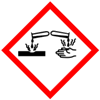 Corrosive |
GHS Label Elements |
Signal Words: Danger
Hazard statements:
H302: Harmful if swallowed.
H315 Causes skin irritation.
H318 Causes serious eye damage.
H373 May cause damage to organs through prolonged or repeated exposure.
H412 Harmful to aquatic life with long lasting effects.
Precautionary statements:
P210: Keep away from heat/sparks/open flames/hot surfaces – No smoking.
P233: Keep container tightly closed.
P261: Avoid breathing dust/fume/gas/mist/vapors/spray.
P264: Wash --- thoroughly after handling.
P270: Do not eat, drink or smoke when using this product.
P271: Use only outdoors or in a well-ventilated area.
P273: Avoid release to the environment.
P280: Wear protective gloves/protective clothing/eye protection/face protection.
P312: Call a POISON CENTER or doctor/physician if you feel unwell.
P301 + P312 + P330: IF SWALLOWED: Call a POISON CENTER/doctor if you feel unwell. Rinse mouth.
3. Composition/Information on Ingredients
Product Name & Other Names: Diethanolamine or 2,2'-Iminodiethanol
CAS No.: 111-42-2
EINECS EC No.: 203-868-0
4. First Aid Measures
Always seek medical attention after first aid measures are provided.
Inhalation: Remove to fresh air. If not breathing, give artificial respiration. If breathing is difficult, give oxygen. Get medical attention.
Ingestion: Never give anything by mouth to an unconscious person. Get medical attention.
Skin Contact: Wipe off excess material from skin then immediately flush skin with plenty of water for at least 15 minutes. Remove contaminated clothing and shoes. Get medical attention.
Eye Contact: Immediately flush eyes with plenty of water for at least 15 minutes, lifting lower and upper eyelids occasionally. Get medical attention immediately.
5. Fire Fighting Measures
Flash Point: 138C
Auto-ignition Temperature: 662C
Products of Combustion: Carbon oxides, Nitrogen oxides (NOx) and fumes.
Fire Extinguishing Media: Use water spray or fog, alcohol-resistant foam, dry chemical, or carbon dioxide. Cool containing vessels with water jet to prevent pressure build-up, auto-ignition, or explosion. Do not allow run-off from firefighting to enter drains or water courses.
Special Information:In the event of a fire, wear full protective clothing and NIOSH-approved self-contained breathing apparatus with full face piece operated in the pressure demand or other positive pressure mode. At high temperatures under fire conditions, it may produce toxic or irritating fumes. Fire-extinguishing work is done from the windward and the suitable fire-extinguishing method according to the surrounding situation is used.
6. Accidental Release Measures
Personal precautions, protective equipment, and emergency procedures: Avoid breathing dust/fumes/gas/mist/vapors/spray. Use individual protective equipment (waterproof boots, suitable protective clothing, safety glasses, etc.). Restrict unprotected personnel from the area.
Environmental precautions: Prevent further leakage or spillage if safe to do so. Do not let the product enter drains, soil, or water sources.
Methods and materials used for containment Cleanup procedures and Storage: Contain spilled material. Cover with an inert, non-combustible absorbent material, (e.g., sand, earth, diatomaceous earth, vermiculite). Vacuum or sweep-up and remove to an approved disposal container. Remove all sources of ignition. Provide proper ventilation.
7. Handling and Storage
Precautions for safe handling: Keep away from sources of ignition - No smoking. Take measures to prevent the build-up of electrostatic charge. Apply according to good manufacturing and industrial hygiene practices. Ensure proper ventilation. In case of insufficient ventilation, wear suitable respiratory equipment. Wash thoroughly after handling. Do not drink, eat, or smoke while handling. Avoid contact with skin, eyes, and clothing. Minimize dust generation. Avoid breathing dust/fumes/gas/mist/vapors/spray. Keep container tightly closed. Avoid ingestion and inhalation. Use individual protective equipment (waterproof boots, suitable protective clothing, safety glasses, etc.).
Conditions for safe storage, including any incompatibilities: Store in cool, dry, and ventilated area away from heat sources and protected from sunlight in tightly closed original container. Keep air contact to a minimum. Do not leave the material container open. Store protected from heat, sparks and ignition sources and incompatible materials. Avoid contact with skin and eyes. Avoid inhalation of dust/mist/vapor. Do not store with incompatible materials like Oxidizing agents, Acids, Copper, Zinc, Iron. Keep the product in its original container well sealed, in a dry and ventilated area, away from potential sources of ignition and protected from light. Protect against physical damage. Air sensitive. Handle and store under inert gas.
8. Exposure Controls/Personal Protection
Airborne Exposure Limits:
ACGIH TLV TWA: 1 mg/m3 Skin.
OSHA PEL (Vacated) TWA: 3 ppm; (Vacated) TWA: 15 mg/m3
Ventilation System: A system of local and/or general exhaust is recommended to keep employee exposures as low as possible.
Personal Respirators (NIOSH Approved): For conditions of use where exposure to dust or mist is apparent and engineering controls are not feasible, a particulate respirator may be worn.
Skin Protection: Wear protective gloves and clean body-covering clothing.
Eye Protection: Use chemical safety goggles and/or full-face shield where dusting or splashing of solutions is possible. Maintain eye wash fountain and quick-drench facilities in work area.
Other Control Measures: Maintain good housekeeping in work area. Handle in accordance with good industrial hygiene and safety practice. Wash hands after handling.
9. Physical and Chemical Properties
Appearance: Clear colorless liquid.
Odor: Ammonia-like odor.
Odor threshold: Not available.
pH: around 11 to 12
Relative Density: 1.1
Boiling Point: 217C
Melting Point: 28C
Flash Point: 138C
Auto-ignition Temperature: about 375C literature.
Decomposition temperature: No data found.
Upper/lower flammability or explosive limits: No data found.
Vapor Pressure (mm Hg): No information found.
Vapor Density (Air=1): No information found.
Evaporation rate: No data found.
Flammability (solid, gas): No information found.
Partition coefficient: n-octanol/water: No information found.
Solubility: Soluble in water.
Viscosity: No information found.
10. Stability and Reactivity
Stability: Stable under ordinary conditions of use and storage. Vapor/air-mixtures are explosive at intense warming. The product is air sensitive and Hygroscopic.
Hazardous Decomposition Products: It emits Carbon oxides, Nitrogen oxides (NOx) and fumes.
Hazardous Polymerization: Will not occur.
Incompatibilities: Oxidizing agents, Acids, Copper, Zinc, Iron.
Conditions to Avoid: Incompatibles, Air, Moisture, Heat, flames, and sparks & light.
11. Toxicological Information
Toxicity data
LD50 Oral - Rat - male and female - 1600 mg/kg.
LD50 Dermal - Rabbit - male - 8328 mg/kg.
Carcinogenicity: IARC 2B - Group 2B: Possibly carcinogenic to humans (Diethanolamine).
Epidemiology: No information found.
Teratogenicity: No information found.
Reproductive Effects: No information found.
Mutagenicity: No information found.
Neurotoxicity: No information found.
12. Ecological Information
Environmental Toxicity: Harmful to aquatic life with long lasting effects.
Toxicity to fish: static test LC50 - Pimephales promelas (fathead minnow) - 1.460
mg/l - 96 h.
Toxicity to daphnia and other aquatic invertebrates: static test EC50 - Ceriodaphnia dubia (water flea) - 30,1 mg/l - 48 h.
Persistence and Degradability: Persistence is unlikely due to its water solubility.
Mobility: Will likely be mobile in the environment due to its water solubility.
Bioaccumulation/ Accumulation: No information found.
Results of PBT and vPvB assessment: No information found.
13. Disposal Considerations
Whatever cannot be saved for recovery or recycling should be managed in an appropriate and approved waste disposal facility.
14. Transport Information
Land Transport DOT USA, TDG Canada & ADR/RID Europe: Not controlled.
Sea Transport IMDG/IMO: Not controlled.
Air Transport IATA/ICAO: Not controlled.
15. Regulatory Information
USA:
SARA 311/312 Hazards: Acute and Chronic Hazard.
California Prop. 65 Components: Not listedto cause cancer, birth defects, or any other reproductive harm.
16. Other Information
DISCLAIMER: The information and recommendations set forth herein are presented in good faith and believed correct as of the date hereof. It is compiled from various sources, and it is not necessarily all inclusive nor fully adequate in every circumstance. In addition, these suggestions should not be confused with nor followed in violation of applicable laws, regulations, rules, or insurance requirements applicable. This SDS MSDS sheet is intended only as a guide to the appropriate precautionary handling of the material by a professionally trained person using this product. Individuals receiving the information must exercise their independent judgment in determining its appropriateness for a particular purpose. This shall not constitute a guarantee for any specific product features and shall not establish a legally valid contractual relationship. In no case shall our company be liable to loss or damages by the product user.

Diethanolamine Manufacturers, Suppliers, Exporters, Wholesalers:
King of Chemicals manufacturers

Plot No. 2900/46&47 + 2900/163to167, GIDC, Ankleshwar, Dist. Bharuch, India
India, USA, UAE
TEL: (Office) 91-22-23774610, 91-22-23723564
e-mail: info@kingofchemicals.com
Copyright and Usual Disclaimer is Applicable --- March 26, 2025
If I give you “My Word” Nobody can undo it.
If I sign an “Agreement” my Lawyer will undo it
Our products are for industrial and laboratory use only. The user must test the material before use. We are not dispensing chemists or druggist and do not offer over the counter type (OTC) products for medical use by individuals.
We and our associates manufacture pure chemicals surpassing Monograph Specifications of Analytical Reagent Standards, British & European Pharmacopoeia BP Ph Eur EP Standard, US Pharmacopoeia USP NF Standard, Indian Pharmacopoeia IP Standard, Japan Pharmacopoeia JP Standard, FCC Food Grade Standard. |
|
